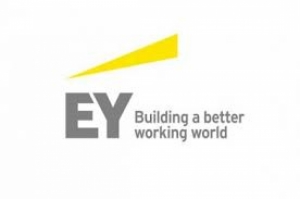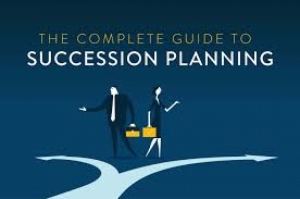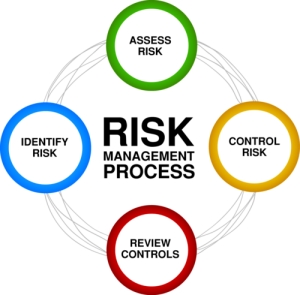عرض العناصر حسب علامة : محاسبة و مراجعة
الإثنين, 21 أكتوبر 2019 07:59
تعديلات على المعيار الدولي للتقارير المالية 17 عقود التأمين ورقة جدول الأعمال 2
نشر في
محاسبة و مراجعة
موسومة تحت
الأحد, 20 أكتوبر 2019 13:01
مبادرة الإفصاح - السياسات المحاسبية .. ورقة جدول الأعمال 11
نشر في
محاسبة و مراجعة
موسومة تحت
الأحد, 20 أكتوبر 2019 12:14
بنك اي اس بي يعالج التحديات الموجودة في مراجعة تقديرات المحاسبة:
نشر في
محاسبة و مراجعة
موسومة تحت
الأحد, 20 أكتوبر 2019 11:31
إيرنست آند يونغ لتحسين عمليات المراجعة عبر لجنة تحقيق مستقلة:
نشر في
محاسبة و مراجعة
موسومة تحت
الخميس, 17 أكتوبر 2019 11:09
الوعي بالأطر والنماذج والأدوات وكيف يمكنهم ذلك تعزيز الممارسات المحاسبية
نشر في
محاسبة و مراجعة
موسومة تحت
الخميس, 17 أكتوبر 2019 10:36
المشورة المهنية: المحاسبة مقابل المراجعة
معلومات إضافية
-
المحتوى بالإنجليزية
Career Advice: Accounting vs. Auditing
Accounting vs. Auditing: An Overview
Accountants and auditors work with a business' financial statements and ensure they are accurate, up-to-date, and in compliance with various regulatory standards. Accountants prepare these financial statements, which include the balance sheet, income statement, and statement of cash flows.
Beyond this, there are myriad additional duties that an accountant might perform, such as bookkeeping, tracking expenses and revenues, forecasting future profits and cash flows, and tax preparation. An accountant could be a dedicated employee of a company or work for a third party hired by businesses to manage its books and prepare its taxes.
KEY TAKEAWAYS
Financial careers for those with math savvy and a love for numbers may include either accounting or auditing.
Accountants are responsible for preparing financial documents, monitoring day-to-day bookkeeping for a firm's operations, and/or preparing and filing tax forms.
Auditors verify the accuracy of financial statements and tax filings and may search for clues as to why some figures don't quite add up.
Accounting
An accountant is a common career choice for those with an analytical mindset and a desire to work with business or personal financial data. An accountant primarily provides in-depth analysis and accurate reporting on financial records, most often completed as a supporting role to a chief financial officer (CFO) or a company's finance department. Accountants also work directly with individuals to review financial records for tax filing for individuals or businesses. An individual trained as an accountant has the opportunity to work in a small, medium, or large company in either the public or private sector, as an independent in his own firm, or as a consultant or contractor to companies or nonprofit organizations.
Accountants are interested in specific and exacting details, day-to-day operations, financial accuracy, and taxes. For example, an accountant describes the present reality of a company or an individual's finances.
Credentials are extremely important to accountants and financial analysts. Entry-level accounting jobs may require a recognized professional title, but advancement certainly depends on it. Pursuing a degree in accounting is the most obvious undergraduate course of action for a future accountant.
Each career choice has one dominant professional certification. For accountants, it is the title of Certified Public Accountant (CPA), which is bestowed by the Uniform Certified Public Accountant Examination and established by the American Institute of Certified Public Accountants. This is probably the most widely known and recognized professional designation in the financial industry.
Auditing
Auditors come in behind accountants and verify the work they do. They examine the financial statements prepared by accountants and ensure they represent the company's financial position accurately. Auditors verify that these financial statements, particularly the ones of public companies that are required to be released annually, are assembled in accordance with generally accepted accounting principles (GAAP).
Like accountants, an auditor can work internally for a specific company or for a third party, such as a public accounting firm, to audit various businesses. Additionally, many auditors are employed by government and regulatory bodies, most notably the Internal Revenue Service (IRS).
Key Differences
Accounting and auditing draw from the same talent pool and, for the most part, require similar skill sets. However, subtle differences exist. Accounting requires a person who is more detail-oriented and focused. Small mistakes can cost millions, particularly for large companies dealing with massive sums of money. As an accountant, it reflects poorly on you when an auditor comes in behind you and discovers errors. Auditors must value attention to detail, but they also need strong investigative skills.
In addition to capturing honest mistakes, a good auditor is called upon to detect subterfuge, fraud, and intentional misstatements. The companies that perpetrate such chicanery are generally good at hiding it, which is why preternatural detective skills are so valuable for an auditor.
Education
Expect to complete at least a bachelor's degree to put yourself in an auspicious position to succeed in accounting or auditing. While neither career imposes across-the-board educational standards, and both professions employ successful people who did not graduate college, these people are the exception, not the rule.
Most high-level accountants and auditors, at some point, take and pass the Certified Public Accountant (CPA) exam. To do so requires 150 hours of postsecondary education, which is more than a bachelor's degree and almost enough to obtain a master's degree. The Big Four accounting firms—PricewaterhouseCoopers, Ernst & Young, Deloitte, and KPMG—for whom many recent graduates in accounting want to work, generally prefer their new hires to have passed the exam already or, at minimum, be eligible to sit for it.
Skills
Accountants and auditors must be good with numbers. This does not mean a working knowledge of multidimensional calculus is necessary, since calculators and spreadsheets do most of the heavy lifting where math is concerned. Professionals in both careers, however, need to be quick and confident with quantitative analysis. Those who get confused easily when working with numbers, and who make constant mistakes, are going to find both careers frustrating.
The accounting world has long been pigeonholed as a haven for nerds and introverts who prefer the company of numbers to people, but this stereotype is outdated and inaccurate. Under the broad umbrella of accounting are many fields, such as management consulting, that require dynamic, extroverted individuals who can establish rapport with C-suite employees and give confident presentations to boards of directors.
Moreover, accountants and auditors often work in teams to conduct such duties as preparing and reviewing financial statements, tallying inventory, and forecasting future sales. The hackneyed image of the geeky accountant squirreled away in a corner cubicle, hiding behind a thick set of glasses and a computer screen, in no way accurately reflects the profession as it exists today.
Starting Salary
The salary range for new accountants and auditors is broad. Where you fall on this continuum depends on several factors, such as education, geographic area, and size of employer. The Big Four firms set the salary benchmarks for the profession, and as of 2017, their salary range for new accounting associates is between $40,000 and $68,000 depending on the factors listed above.
A job with a smaller public firm or an industry accounting position might pay within this range, or it might pay more or less. Also, keep in mind that accounting and auditing starting salaries are highly negotiable; if you have multiple offers on the table, this can be used as leverage to get a higher salary from your chosen employer.
Job Outlook
The government lumps accountants and auditors together when forecasting career growth, with the forecast looking strong. According to the U.S. Bureau of Labor Statistics' (BLS) Occupational Outlook Handbook, there is an expected 10% growth rate for accountants and auditors between 2016 and 2026. This compares to an average growth rate for all occupations of 7%.
Job growth in the accounting field closely correlates to the health of the economy as a whole. Stronger-than-expected economic growth could push the numbers for accounting upward, while a deep recession or prolonged period of stagnation might squelch the demand for accountants in the coming years.
Which One to Choose
For a recent grad or young professional who is ambitious, detail-oriented, and quantitatively inclined, it is difficult to go wrong with either accounting or auditing. Subtle distinctions in your interests and personality type will likely determine which career path will ultimately be more satisfying. If creating things from piles of raw numerical data sounds like a fun way to spend a day, lean toward accounting. If, on the other hand, taking someone else's creation and picking it apart looking for errors and inconsistencies sounds more exciting, a career in auditing can give you what you desire.
It is also worth noting that both career paths offer strong income potential, above-average job security, and plenty of upward mobility. As for which one can lead to a more successful and satisfying career, that depends largely on specific goals, personality, and skill set.
نشر في
محاسبة و مراجعة
موسومة تحت
الخميس, 17 أكتوبر 2019 09:37
المدراء الماليون لا يقومون بما يكفي من التخطيط لمن سيتبعوهم في المستقبل
معلومات إضافية
-
المحتوى بالإنجليزية
CFOs not doing enough succession planning
When CFOs leave a company, there’s often no succession plan to replace them. A study last year by recruiting firm Korn Ferry found that only 34 percent of CFOs surveyed agreed there is a succession plan in place for their roles. When asked if there is an internal successor who is ready to take over their role, 81 percent of the CFOs surveyed reported there is none.
The Institute of Management Accountants has seen similar findings in other research. “I think it aligns with what some other studies have also said, and I think CFOs in general may say that they're too busy or the demands on them are too great or they have a unique skill set that doesn't exist elsewhere in the organization,” said IMA CFO Doreen Remmen. “Those are all problems and things that we need to recognize and make sure that we have plans in place. We believe that succession planning is critically important to the sustainability of organizations and long-term business health. It's a responsibility of every CFO to have a succession plan, whether that is internal staff or thoughts about external recruitment. It's every CFO’s responsibility to make sure that their house is in order so that their successor can also be successful in the role.”
The Korn Ferry study also found that just over half, or 53 percent, of the CFOs polled who have been at their company for more than 10 years agree they have a succession plan. Public company CFOs reported their company is more likely to have a succession plan in place compared to private companies (46 percent compared to 28 percent).
CFO successors can be drawn from internal roles such as the controller or chief accounting officer, or they may come from outsiders recruited by the company board, especially as the traditional role of the CFO changes. “My own career path was through the controllership role,” said Remmen. “That’s a very traditional role, although I think that the CFO of today typically has responsibility that goes far beyond controllership and accounting. The CFO of today is probably involved in strategy and operation. Here at IMA, I have responsibility for operations and also for human resources and technology. I see it as my responsibility to have succession plans in place not only for myself, but for each of those key roles that report to me and even another layer below that.”
The study found that 31 percent of the surveyed CFOs reported leadership skills and executive presence are the number one capability that CFOs focus on in developing direct reports.
“We try to inform our members about how they can ascend to leadership roles, eventually the CFO role,” said Remmen. “I think that no matter what size the company is or what industry you're in, people who are early in their career may think that they need to acquire more and more and more technical and broader skills. That absolutely is important, to be very technically proficient, but to ascend from comptroller to CFO you probably need another set of skills. That's where your leadership skills become even more important.”
The IMA recently released an updated version of its Management Accounting Competency Framework, which can help accountants go up the career ladder to become CFOs. “We have highlighted a number of different skill categories,” said Remmen. “In addition to reporting and control, which are probably the things that people think about first, we're encouraging our members to achieve skills in strategy and planning and performance management. They need to be really aware of technology and how that's changing the profession, and making sure that they understand where technology is taking business in general and the accounting profession specifically. Our members need to have business acumen. They need to get involved in operations. Cross-functional training is really important if they hope to ascend to the CFO role. They need industry-specific knowledge. If they're working in manufacturing, they need to understand how their product comes to be. They need to understand quality and continuous improvement, and they need to have a strong ethical foundation. That’s a skill set that’s very critical as you ascend that leadership ladder. Communication skills, presentation skills, how to motivate others — change management is a critically important skill category, and conflict management, negotiation skills — those are things that need to be developed. There's a whole set of skills that need to be developed that the CFO needs to focus on developing in his or her staff, and that each person who is hoping to ascend to the CFO role also needs to be working on developing.”
As a company evolves, she noted, it needs different skill sets in its CFO, and that’s how CFOs can advance their careers and choose appropriate successors to take on their earlier functions.
“A company might be in disarray, and you might be a turnaround expert, and that might be why you were hired as CFO — to cut costs and to get the house in order and begin to present financial information in ways where good decisions can be made,” said Remmen. “That might be why you were hired, but the sooner you can develop a strong successor for that role that you were hired for, the faster you can explore opportunities for yourself within the company. For example, you could go from being a cost expert to being the strategy expert and be working to develop the strategy of the organization. You might go from returning the company to profitability to going on to lead an IPO or to negotiate a series of acquisitions. The ambitious CFO is always looking for a successor, getting something under control and then handing it off to somebody else to manage so that they can move on to different work that the company needs as it evolves.”
نشر في
محاسبة و مراجعة
موسومة تحت
الأربعاء, 16 أكتوبر 2019 12:57
المحاسبون في طريق مسدود مع قواعد التعليم الإلزامي الواردة
نشر في
محاسبة و مراجعة
الأربعاء, 16 أكتوبر 2019 11:04
القضاء على التحيزات التي تُهدِد جودة عملية المراجعة
تنص معايير المراجعة على أن نظرية الإستقصاء وحدها لا تقدم أدلة كافية بشأن عدم وجود أخطاء مادية، ومع ذلك، تشيرعمليات التفتيش التنظيمية ونتائج الاختبارات إلى أنه حتى المراجعين المتمرسين غالبًا ما يقبلون ببساطة تفسيرات الإدارة دون مزيد من التفاصيل
معلومات إضافية
-
المحتوى بالإنجليزية
Eliminating biases that jeopardize audit quality
Auditing standards state that inquiry alone does not provide sufficient evidence regarding the lack of material misstatement (AU-C §500, Audit Evidence, ¶.A2), yet regulatory inspections and laboratory findings indicate that even experienced auditors often simply accept management's explanations without further corroboration. In its staff inspection brief issued in August 2017, the PCAOB staff stated that reviews of audit inspections have continued to raise concerns about whether some auditors apply professional skepticism, particularly in areas that involve management judgment. The brief stated that inspectors observed that some auditors sought to obtain only evidence that would support judgments or representations made by management. The auditors failed to critically take into account all relevant evidence, regardless of whether it confirmed or contradicted management's assertions.
Why does this problem persist despite the authoritative guidance and its overall importance to the audit process? The PCAOB (2012) offers some insights when stating that auditor skepticism can be hindered by cognitive biases. By expanding on these insights, this article aims to show auditors of both private and public companies how they can improve their judgment and enhance their professional skepticism. We begin by briefly examining the factors likely to influence an auditor's decision to investigate management's representations. We then examine common cognitive biases that can make auditors more vulnerable to flawed decision-making, and describe how auditors can learn to apply mental modeling to combat cognitive biases (without the need for specific firm training), thus improving auditor judgment and professional skepticism.
CORROBORATING MANAGEMENT REPRESENTATIONS
AICPA Professional Standards stress that while client inquiry is an important source of evidence, typically such discussion alone does not provide evidence of the absence of a material misstatement or the effectiveness of internal controls (AU-C §500, ¶.A2). The required corroboration can include comparing the explanation to the auditor's preexisting understanding "of the entity and its environment, and other audit evidence obtained during the course of the audit" (AU-C §520, Analytical Procedures, ¶.A28).
When an unexpected material issue arises, most auditors will seek additional information from the client, but as noted in "The World Has Changed: Have Analytical Procedure Practices?" by Greg Trompeter and Arnold Wright, Contemporary Accounting Research, Vol. 27, Issue 2, page 669 (2010), as many as one-third of auditors may not always follow up to corroborate the client-provided explanations. Additionally, "Two Decades of Behavioral Research on Analytical Procedures: What Have We Learned?" by William F. Messier Jr., Chad A. Simon, and Jason L. Smith, Auditing: A Journal of Practice & Theory, Vol. 32, Issue 1, page 139 (February 2013), finds that when performing analytical procedures, even experienced auditors fail to follow through with additional evidence when a client explanation appears plausible, and are likely to overweight a client's explanation, compared to other pieces of evidence, when forming conclusions. Corroborating management estimates and fair value measurements also has been a challenge for auditors for many years, as PCAOB inspectors cited this as one of the three most common areas of audit deficiencies identified in 2016 audits.
COGNITIVE BIASES IMPACTING AUDITORS
Research in psychology suggests that factors in the audit setting create cognitive biases that can reduce the auditor's likelihood of following up on client explanations with additional evidence. Cognitive biases represent often unconscious, systemic influences affecting how individuals gather and interpret information when forming judgments and decisions. Identifying these unconscious biases can aid professionals in counteracting the potential "pitfalls" arising during the explanation-corroboration process of the audit. While auditors are susceptible to many types of unconscious bias, we specifically focus on three that regulators and researchers suggest are common influences, increasing the likelihood that the auditor accepts an explanation without additional corroborating evidence.
Motivated reasoning
Many audit judgments are made with significant uncertainty, and research indicates that auditors who evaluate management explanations for "reasonableness" may be less likely to follow up and corroborate with additional information. The answers are not always in a stark black-and-white format. Psychology research finds that these types of judgments open the door for motivated reasoning bias that can sway the auditor toward accepting the client's preferred conclusions.
Motivated reasoning bias is a well-documented phenomenon describing an unconscious bias in which individuals interpret information in a manner that is consistent with their own goals. For an auditor, these goals can include improving client relations as well as trying to meet budget objectives. Suppose that an auditor is over budget in a particular area and asks a client for an explanation regarding an account fluctuation. Motivated reasoning theory suggests that in the absence of supporting evidence, auditors are more likely to convince themselves that the client's explanation is reasonable without actually finding supporting evidence. Further, the unstructured benchmark of the auditor reasonableness judgments opens the door for other factors like source credibility of the client, complex business environments, and the nature of auditors' listening activity to influence auditor judgment.
Source credibility and complex business environments
If an auditor considers the client highly credible, then he or she is more likely to rely on the client's explanations. In their book chapter titled "Attitude Change: Multiple Roles for Persuasion Variables," pages 323—390 found in Handbook of Social Psychology (1998), Richard Petty and Duane Wegener explain that source credibility has two components — expertise and trustworthiness — and each component has a different effect on the auditors' likelihood of accepting an explanation. Expertise relates to the messengers' level of knowledge about a particular subject. Not surprisingly, when a message source is considered trustworthy, the message becomes more persuasive.
The auditor's vulnerability to source credibility bias may increase when the client's business environment is complex. In accordance with Professional Standards (e.g., AU-C §330, Performing Audit Procedures in Response to Assessed Risks and Evaluating the Audit Evidence Obtained), auditors are required to understand the operational aspects of their client's business and how these operations interact with the industry and the overall economy. This includes understanding how these industry and macroeconomic forces interact and flow down to the client level to affect the risk of material misstatement.
While gaining this understanding may seem straightforward, understanding the sometimes complex interactions can be challenging. Consider, for example, a client that is a fast-growing franchising company specializing in pastries. This client often assists its franchisees with the purchase of a franchise by extending a note receivable. Further, suppose that the client's pastries become so popular that the market becomes saturated with outlets selling its products. This market oversaturation, particularly when combined with changing customer preferences, creates risk to the client as the franchisees begin to struggle to sell their product and perhaps default on loans made by the client. The financial statement impact becomes apparent as the franchisee-related notes receivable may be impaired. Additionally, rapid growth can lead to other qualitative factors, such as a decline in product quality, that also affect sales. While the risks associated with this type of growth may seem intuitive when spelled out clearly in a narrative, in the real world, the auditors would have to gather this operational information themselves and understand these risks as well as recognize how the risks affect the likelihood of material misstatement.
The nature of the auditors' listening activity
In "The Effect of Client Lies on Auditor Memory Resistance and False Memory Acceptance," Auditing: A Journal of Practice & Theory, Vol. 35, Issue 3, page 33 (August 2016), Billy E. Brewster (who is also a co-author of this article) finds evidence suggesting that the very nature of the audit experience can increase the auditors' susceptibility to persuasive client explanations. When auditors are trained to interview their clients, they are naturally expected to listen carefully to the explanation.
Listening closely and carefully is taught in the classroom and suggested in Professional Standards. However, Brewster finds that when auditors do not have a well-developed understanding of the client and its operating environment, the careful listening process may actually embed client lies in the auditor's memory. Hence, not only are these auditors less likely to identify client lies when evaluating client explanations, when subsequently prompted to recall the related information, they will recall the embedded client lies instead of their own previously constructed accurate facts.
COMBATING BIASES AND IMPROVING JUDGMENT
Fortunately, mental modeling and simulation activities can help auditors reduce the impact of cognitive biases and improve audit judgments. In another article, Brewster suggests that the auditor must develop a "mental model" of the client operating environment and how it interacts with the outside economy (see "How a Systems Perspective Improves Knowledge Acquisition and Performance in Analytical Procedures," The Accounting Review, Vol. 86, Issue 3, page 915 (May 2011)). A mental model is a cognitive representation of a particular phenomenon. The quality and detail of an individual's mental model depends on both the individual's understanding and his or her information processing ability. Think of the mental model as a "mental picture" that an individual has in his or her head regarding how something works. In an auditing scenario, mental models help auditors develop the expectations that serve as the benchmark against which they can evaluate management explanations. Brewster finds that when auditors do not develop accurate mental models, they are less likely to identify the client's erroneous explanations.
To illustrate, imagine an auditor asking a client about a decline in gross profit percentage. According to Professional Standards (AU-C §315, Understanding the Entity and Its Environment and Assessing the Risks of Material Misstatement, ¶.12), before talking to the client, the auditor should obtain an understanding (i.e., mental model) of the macroeconomic and industry forces that combine to affect the input variables in the gross profit percentage. For example, the gross profit of a fast-food chain would be influenced by changes in beef prices. Many auditors will immediately ask the client about significant fluctuations. A better approach is for the auditor to develop expectations on how beef prices would change over time depending on how the interacting variables move. The auditor can then compare the client explanation to his or her own mental simulations and follow up on any disagreement between the two.
Psychologist Gary Klein, in his book Sources of Power, provides criteria auditors can use to evaluate the accuracy and sufficiency of their mental models. First, do the causal relationships in the mental model make sense? In other words, is the model consistent with the auditor's prior understanding of the industry and economy? Second, how much accuracy should be incorporated into the mental model? If the auditor assesses a higher risk of material misstatement, and therefore requires more precise expectations, the model should be more accurate. Finally, is the model missing any important facts? If so, the auditor may have to make too many unknown assumptions when evaluating management's explanations.
A more accurate mental model will ultimately result in the development of more accurate expectations — an integral part of audit testing. Ideally, auditors will attempt to draw or graph out their own mental models focusing on causal linkages, interactions, and the directional (positive versus negative) effect of these interactions before soliciting management explanations. For simple models, this can be done easily with paper and pencil. More complex models can be devised with a variety of software programs.
The benefit of drawing the model is that the auditor is forced to evaluate whether he or she truly understands the processes and relationships among the variables. To illustrate, consider an auditor who is evaluating the adequacy of a client's warranty reserve liability. In the last year, the client implemented major cost-saving and efficiency initiatives throughout the company. Initial production line changes have resulted in more efficient, cost-effective operations, and the client recently laid off 10% of its production workforce. If future production efficiency and cost-saving measures are effective, the intent is to lay off an additional 10% to 15% of the production line workers in two years. The client has also decreased the warranty reserve liability relative to sales when compared to prior years, citing a gradual drop in warranty claims over the last three years. Although the client's rationale for reducing the warranty reserve may hinge on past trends, an accurate mental model considers the potential unintended consequences of the layoffs on the warranty reserve. A complete mental model would include consideration of factors (such as reduced employee morale resulting from the current and planned layoffs) that may lower the quality of the product produced, leading to increases in warranty claims and the need to also increase the warranty reserve.
To fully examine these factors, the auditor will need to graph out the causal forces that affect the quality of the product (see the graphic, "Sample Product Quality Causal Diagram"). The result of the modeling process will be a causal diagram showing any positive or negative effects. The causal diagram can be used to simulate different conditions and determine the impact on the client's operations. Based on the model, the auditor can then try to understand how the account being tested would fluctuate over time.
نشر في
محاسبة و مراجعة
موسومة تحت
الأربعاء, 16 أكتوبر 2019 10:21
إدارة المخاطر والرقابة الداخلية
العديد من المحاسبين لديهم خبرة في إدارة المخاطر والرقابة الداخلية من حيث صلتها بالمخاطر المالية وإعداد التقارير، والتي إن لم تتم إدارتها بشكل صحيح، يمكن أن تؤثر على ثقة المستثمرين في المنظمة. ومع ذلك، فإن مشاركتهم في هذه المجالات يمكن يؤدي إلى عملية تخفيف لتمكين الأعمال وتحمل المخاطر في سياق خلق القيمة
نشر في
موضوعات متنوعة
موسومة تحت










